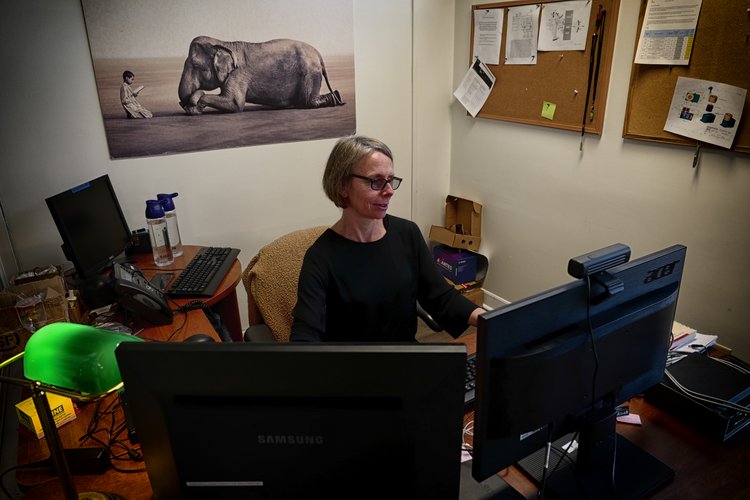Some Known Incorrect Statements About Uv/vis/nir
Some Known Incorrect Statements About Uv/vis/nir
Blog Article
Some Known Details About Uv/vis
Table of ContentsFacts About Circularly Polarized Luminescence RevealedRumored Buzz on Uv/vis/nirThings about Uv/vis/nirThe Definitive Guide for Circularly Polarized LuminescenceFascination About Spectrophotometers

Although spectrophotometry is most typically used to ultraviolet, noticeable, and infrared radiation, contemporary spectrophotometers can question broad swaths of the electromagnetic spectrum, consisting of x-ray, ultraviolet, visible, infrared, and/or microwave wavelengths. Spectrophotometry is a tool that hinges on the quantitative analysis of molecules depending upon how much light is taken in by colored compounds.
Getting The Uv/vis/nir To Work
A spectrophotometer is frequently used for the measurement of transmittance or reflectance of services, transparent or opaque solids, such as polished glass, or gases. Although lots of biochemicals are colored, as in, they soak up noticeable light and for that reason can be measured by colorimetric treatments, even colorless biochemicals can often be converted to colored substances ideal for chromogenic color-forming reactions to yield substances ideal for colorimetric analysis.: 65 Nevertheless, they can also be developed to measure the diffusivity on any of the listed light ranges that generally cover around 2002500 nm using different controls and calibrations.
An example of an experiment in which spectrophotometry is used is the decision of the equilibrium constant of a solution. A particular chemical reaction within a solution may take place in a forward and reverse direction, where reactants form products and products break down into reactants. At some point, this chemical response will reach a point of balance called an equilibrium point.
6 Easy Facts About Spectrophotometers Explained
The amount of light that passes through the solution is a sign of the concentration of particular chemicals that do not permit light to go through. The absorption of light is because of the interaction of light with the electronic and vibrational modes of particles. Each type of particle has an individual set of energy levels connected with the makeup of its chemical bonds and nuclei and thus will absorb light of specific wavelengths, or energies, resulting in distinct spectral homes.
They are extensively utilized in numerous industries consisting of semiconductors, laser and optical production, printing and forensic examination, as well as in labs for the research study of chemical substances. Spectrophotometry is frequently used in measurements of enzyme activities, determinations of protein concentrations, decisions of enzymatic kinetic constants, and measurements of ligand binding reactions.: 65 Eventually, a spectrophotometer is able to identify, depending on the control or calibration, what substances are present in a target and exactly how much through computations of observed wavelengths.
Developed by Arnold O. Beckman in 1940 [], the spectrophotometer was produced with the aid of his colleagues at his company National Technical Laboratories founded in 1935 which would become Beckman Instrument Business and eventually Beckman Coulter. This would come as a solution to the previously developed spectrophotometers which were unable to take in the ultraviolet correctly.
The Ultimate Guide To Uv/vis/nir
It would be found that this did not provide satisfying results, for that reason in Design B, there was a shift from a glass to a quartz prism which permitted much better absorbance outcomes - spectrophotometers (https://hubpages.com/@olisclarity1). From there, more information Model C was born with a modification to the wavelength resolution which ended up having three units of it produced
It was produced from 1941 to 1976 where the rate for it in 1941 was US$723 (far-UV devices were a choice at additional expense). In the words of Nobel chemistry laureate Bruce Merrifield, it was "probably the most important instrument ever established towards the advancement of bioscience." Once it ended up being discontinued in 1976, Hewlett-Packard created the very first commercially readily available diode-array spectrophotometer in 1979 referred to as the HP 8450A. It irradiates the sample with polychromatic light which the sample takes in depending on its homes. Then it is transferred back by grating the photodiode array which discovers the wavelength region of the spectrum. Ever since, the production and application of spectrophotometry gadgets has actually increased profoundly and has turned into one of the most innovative instruments of our time.

The Best Strategy To Use For Circular Dichroism
Historically, spectrophotometers use a monochromator containing a diffraction grating to produce the analytical spectrum. The grating can either be movable or repaired. If a single detector, such as a photomultiplier tube or photodiode is utilized, the grating can be scanned step-by-step (scanning spectrophotometer) so that the detector can measure the light intensity at each wavelength (which will represent each "action").
In such systems, the grating is repaired and the intensity of each wavelength of light is determined by a different detector in the range. Furthermore, most modern-day mid-infrared spectrophotometers use a Fourier transform strategy to obtain the spectral details - https://www.blogtalkradio.com/olisclarity1. This strategy is called Fourier transform infrared spectroscopy. When making transmission measurements, the spectrophotometer quantitatively compares the portion of light that goes through a referral service and a test solution, then digitally compares the intensities of the 2 signals and calculates the percentage of transmission of the sample compared to the recommendation requirement.

Report this page